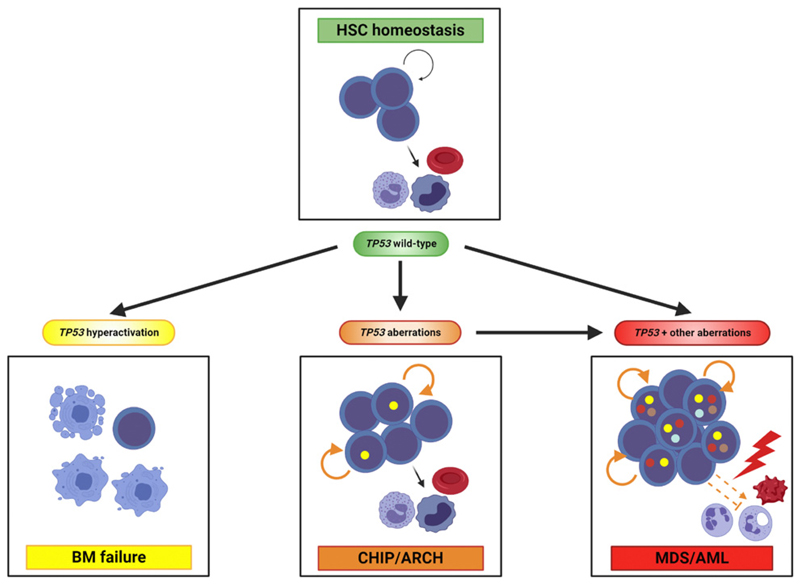Figure 2.
p53 hematopoietic stem cell functions under physiologic and pathologic conditions. In normal HSCs, p53 substantially contributes to their homeostasis that constitutes a balance between self-renewal (indicated by circled arrow) and differentiation intomature blood cells. Hyperactivation of p53 following continuousDNA damage, as induced experimentally or observed in patients with Fanconi anemia and other disorders, induces HSC quiescence and apoptosis, ultimately leading to bone marrow failure. Aberrations of TP53 transforms HSCs into pLSCs forming the basis of clonal hematopoiesis of indeterminate potential (CHIP) and age-related clonal hematopoiesis (ARCH). In these cases, their self-renewal capacitymight be increased (indicated by orange circled line). pLSCs with TP53 aberrations may be selected during genotoxic stress, acquire cooperating mutations and transform into LSCs giving rise to MDS or AML. Here, stem cells additionally demonstrate differentiation defects. Importantly, MDS and AML may also develop without overt preleukemic phase. Yellow dots within nuclei represent TP53 aberrations; other colored dots represent cooperating genetic events.

